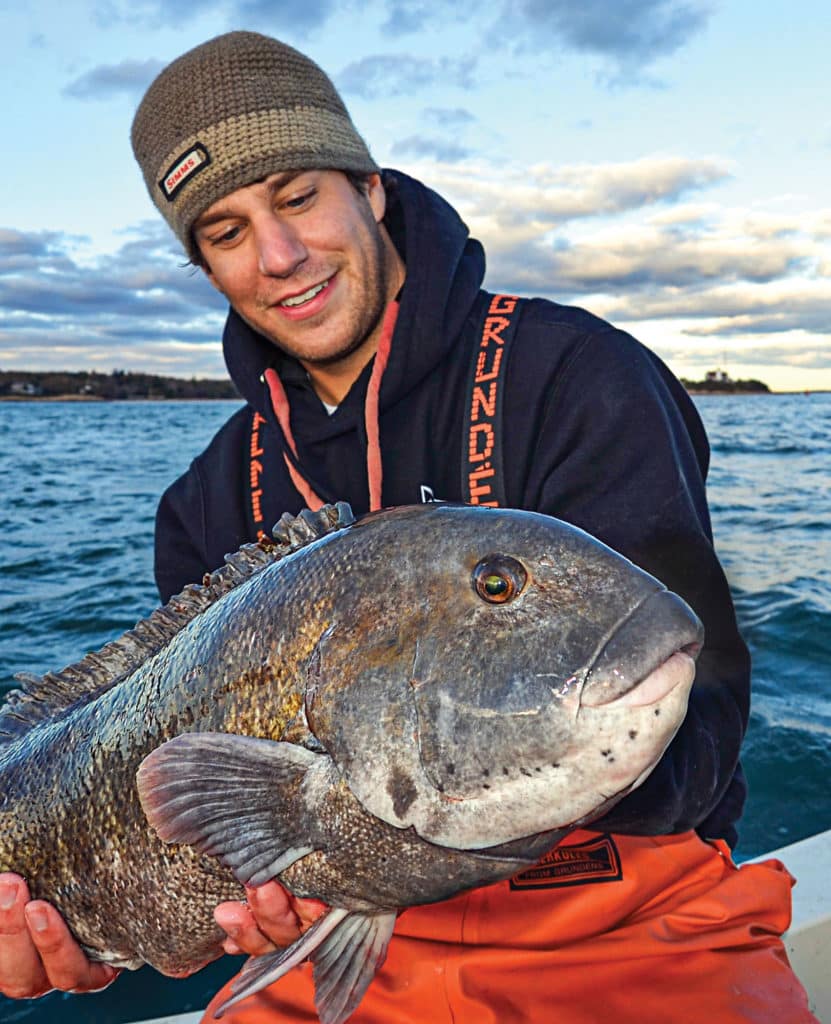
Perched on the bow of Capt. Jesse Bloomquist’s skiff, I dropped my jig—tipped with half a green crab—a mere 8 feet off a back-bay sod bank in Margate, New Jersey. Rolling on the submerged sod, it wavered back and forth until I felt a slight tap. I let the fish munch on the crab a little, then set the hook hard. Seconds later, a 4-pound blackfish flopped on deck.
No heavy reeling, no meat-stick fishing, no waiting for the lure to hit bottom some 150 feet down—the water we were fishing was so shallow that I could walk back to the dock. Big blackfish were the target, but armed only with light tackle, we were in search of bay dwellers.
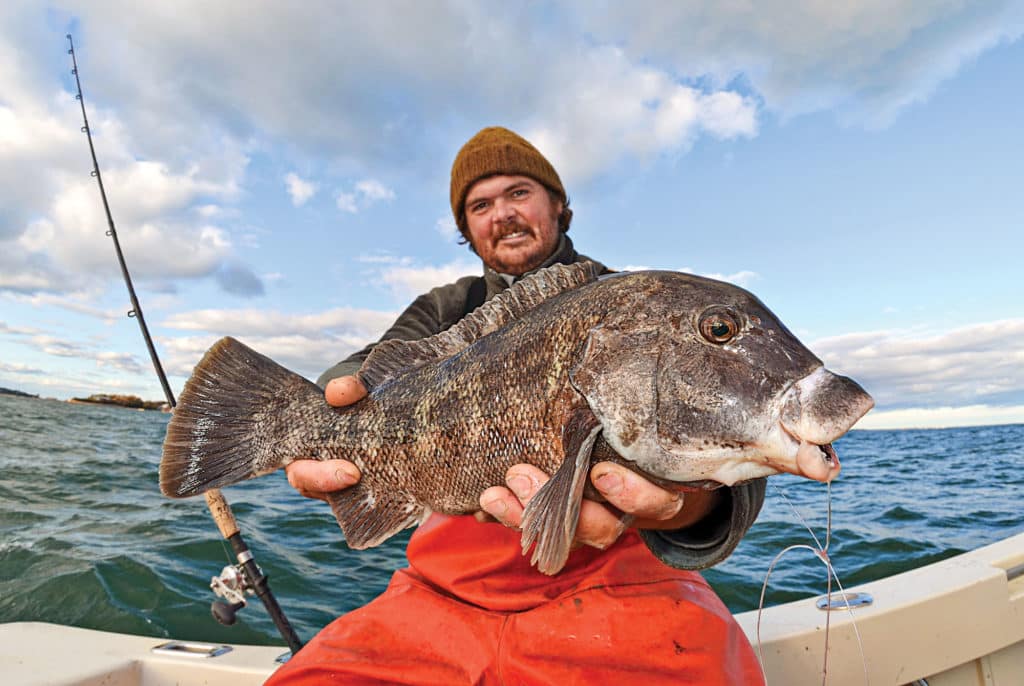
Hallowed Shallows
Northeastern backwaters harbor myriad structure outside of the traditional wreck and reef blackfish haunts. Sod banks that naturally slide off into the channels create submarine hangouts and hideaways, rock piles surrounding Intracoastal Waterway markers and marina entrances provide rocky habitat, and piers and bulkheads offer forage: a mix of sea worms, crabs, crustaceans and mollusks.
Shallow-bay action with blackfish occurs from April through November, with late April to June, and September through November the prime periods. Optimal water temperatures sit between 62 to 65 degrees, but tautog will bite in water ranging from the mid-50s up to 70 degrees. Unlike deepwater systems, bay toggers fish depths in the 8- to 18-foot range, and sometimes go as shallow as 4 feet, focusing on clean, clear water, primarily from an hour before high tide to an hour after, when they don’t have to deal with a ripping current, and minimal tidal flow usually results in cleaner water.
Dig the Jig
Though virtually unheard of more than five years ago, jigging for tautog is definitely not a passing fad.
The peculiar way a crab bait lies horizontally on the shank of the weighted hook, how it sits on the seafloor, and the immediate transmission of the bite to the rod tip have gained the jigs vast popularity and accounted for the lion’s share of fish caught in recent years. But shallow waters present an opportunity to target tautog with lighter tackle, making for a true challenge.
The key to finding ’tog in the backwaters starts with searching the sedge banks.
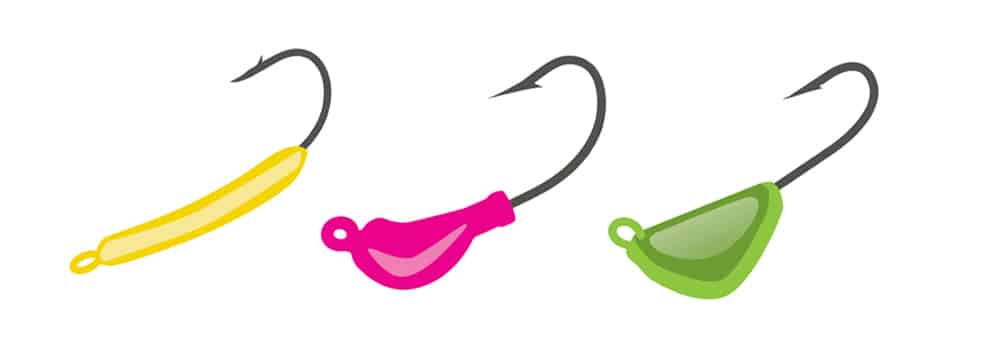
“I start out by using the side-scan to identify prime sunken structure in bay waters,” says Bloomquist of Flat Out Fishin’ Charters. “I look for spots where sod banks have slid off and sunk into the water, kind of like submarine steps. Once I find a decent spot, I disperse bits of crab legs and shells to chum up fish. Then I set the spot lock on the trolling motor to hold position; this way, I can move up or back 10 feet and work all zones around the spot,” he adds. “If there’s little or no current, I just toss the anchor onto the sod banks and let out enough rode to get over the spot.”
Bloomquist fishes slack tide primarily, but when the tide picks up, it often creates swirling eddies off the sedge points that basically act as stationary waters.
“Optimal conditions to jig are little to no current and no wind, to enable a straight, vertical presentation. I’m looking for 62- to 65-degree water in September through November, in depths ranging from 12 to 20 feet. Most of the fish we catch run 2 to 6 pounds, but I’ve seen 12-pounders caught in just 8 feet of water.”
Bloomquist’s ’tog jig rig consists of 30-pound-braid running line connected to a 24-inch section of 20- to 30-pound fluorocarbon with a surgeon’s knot, and a ¼- to 1-ounce jig head tied to the leader with a clinch knot. Custom jigs are primo, but a regular Kalin’s leadhead will do in a pinch.
When plying sedges, Bloomquist prefers 1/0 banana-style jigs that sit flat with the hook pointing up. But he switches to a boxing-glove-style jig head, which slides between the crevasses better, when fishing a wreck or rocky spot.
“I look for jigs with a chip-resistant coating in bright orange and green, to mimic a green or white legger crab. I tip the jig with half a crab and, instead of jigging with sweeping strokes, I let the lure-and-bait combination jig sit on the bottom.
“There’s no need to twitch it; the trick is discerning the bites, as tautog tend to grab the hook and latch themselves on while chewing away at the bait,” Bloomquist says. “You usually feel a few light taps and some weight. It takes some practice to dial in just when to set the hook.”
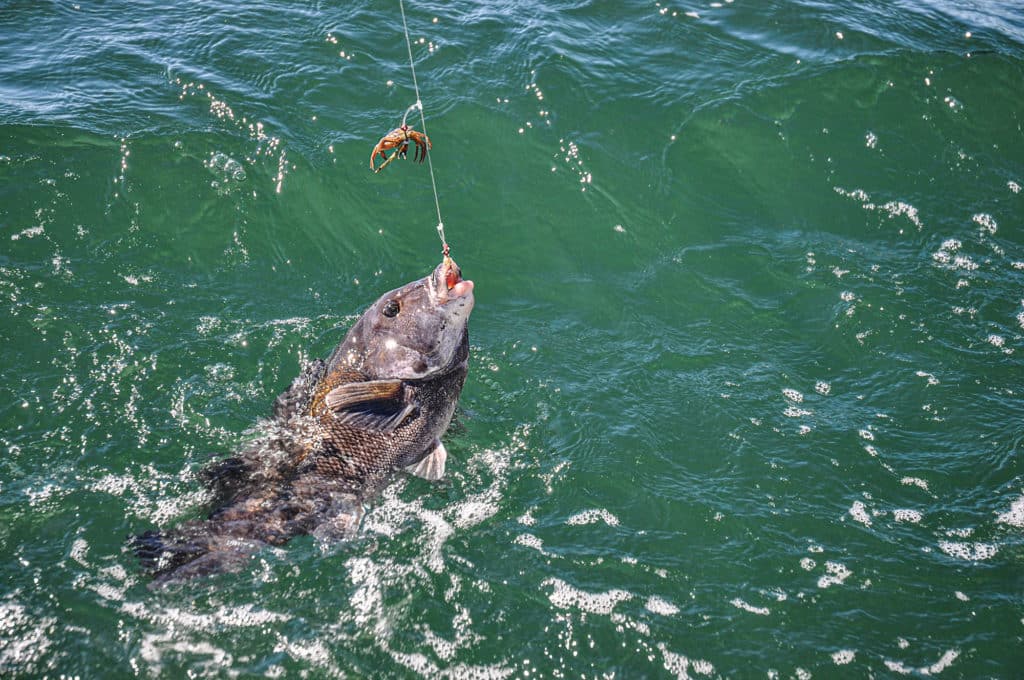
Throwing Darts
“Rushing tides flow over submerged jetties, creating a washing-machine-type atmosphere that kicks up forage,” says Capt. Dave DeGennaro of Hi-Flier. He takes full advantage of the conditions that produce feeding frenzies from July through September to pluck blackfish off the Barnegat Inlet jetties and backwater rock piles.
“I anchor about 75 feet from a jetty and chum the waters, throwing handfuls of grass shrimp back toward the jetty to start a chum slick,” DeGennaro says. “Ideally, I hit the advanced stages of the incoming tide, when it’s flowing in over submerged rocks, creating turbulence and stirring up crustaceans and sea worms.”
DeGennaro scales down to 7-foot medium-action spinning rods and 4000-class reels spooled with 12-pound monofilament line.
His shrimping rig consists of a 50-pound Spro barrel swivel, 30 inches of 20-pound fluorocarbon leader, and either a size No. 1 bronze Baitholder hook or a ¼-ounce shad dart, on which he impales a lump of five or six grass shrimp.
Most times, such shrimp-ball baits are free-lined sans weight, but if hits are scarce, DeGennaro sometimes pinches on a split shot, and uses a small RediRig float or slip bobber about 20 feet above the bait.
“I’ll free-line baits back into the rocks, letting the current carry them naturally,” DeGennaro says. “If using a bobber, I pull out 20 feet of line, then add the bobber by hand, keeping slack on the line delivering the shrimp ball toward the jetty for a suspended, natural presentation.”
However, with such light tackle and slack line, hits can be light and undetectable.
“Usually, the pickup is just a light bump, not the usual pounding hammer generally attributed to blackfish,” DeGennaro adds. “We set the hook on every check of the rod, as you can’t always detect a bite with the slack line, though most times you will feel the blackfish run off with the bait.”
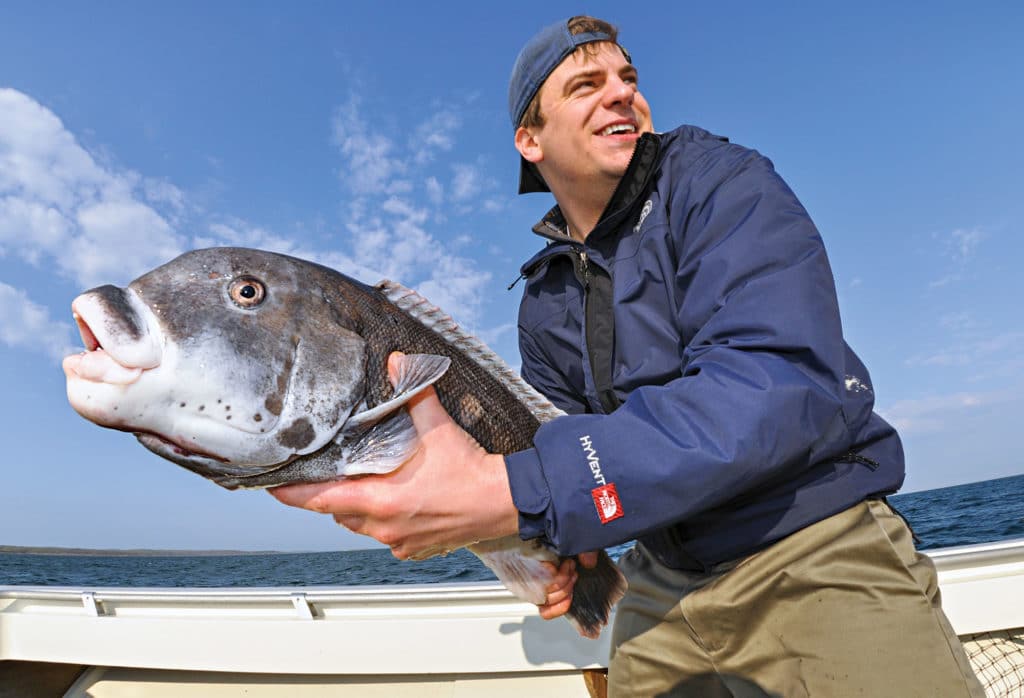
One-Stop Droppin’
If conditions are too gnarly or the current too fast to implement ‘tog jig and dart presentations, it’s always a good bet to pull out the standard single-hook-and-weight dropper (aka Belmar Rig). Capt. Sean Reilly, who charters from Kirra out of Ocean City, New Jersey, relies on this tactic around both hardscrabble rubble off marina bulkheads and riprap around ICW markers.
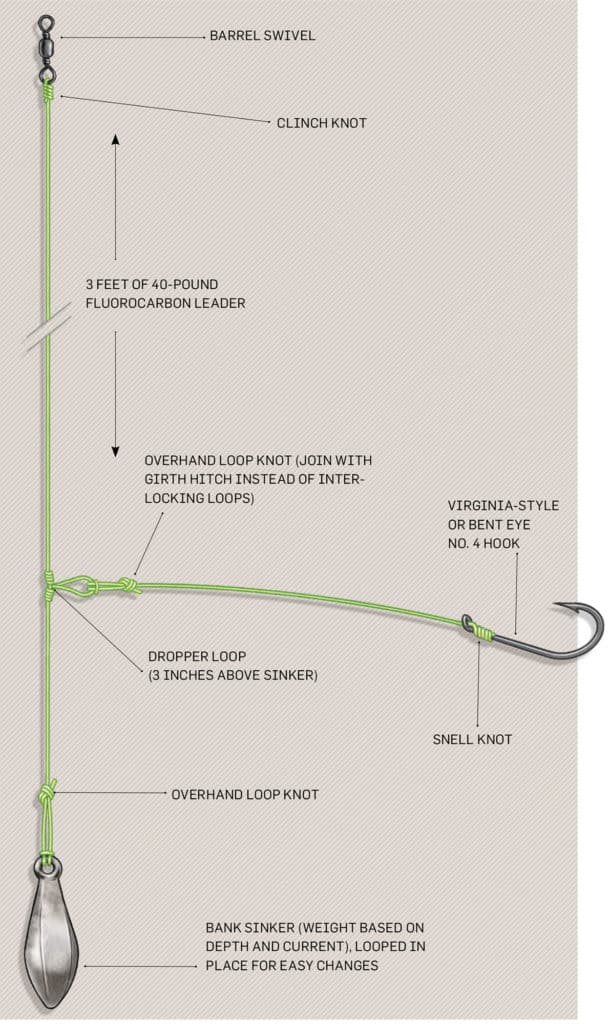
“The Belmar is a standard blackfish rig, but since we are only fishing in 6 to 15 feet of water, the bites are easier to detect,” Reilly adds. “Plus the rig works when conditions won’t allow any other way of fishing. It saves the day when the weather deteriorates, and you can’t anchor to fish light-tackle jigs. If the current is running too hard, I rope off to channel markers and bulkheads to hold position over the rocky rubble that bolsters the base. Tying off gives us the opportunity to fish dropper rigs without anchoring.”
Deepwater and brawny tactics aren’t the only game in town when it comes to targeting tautog. Search in shallow back-bay waters, and you shall find hungry blackfish there too.









